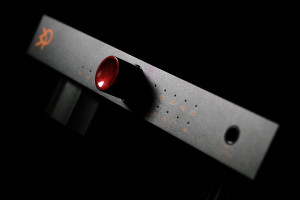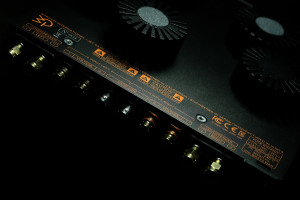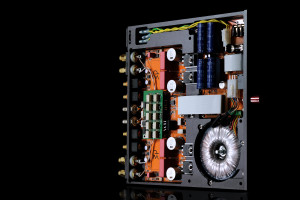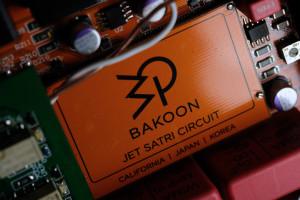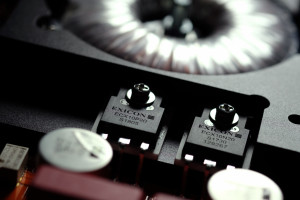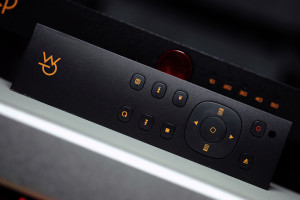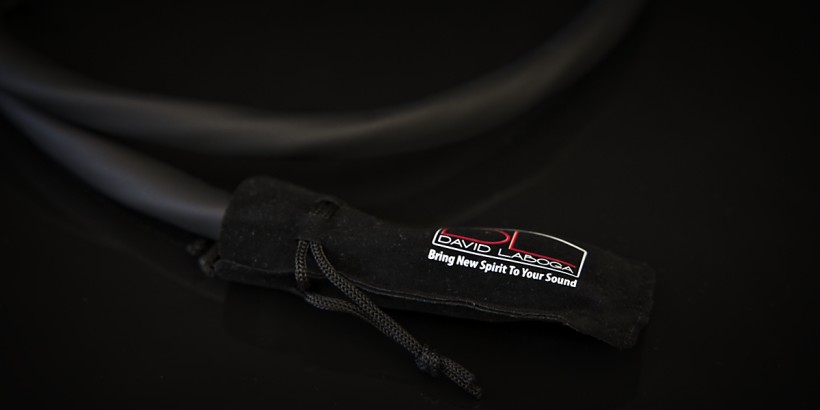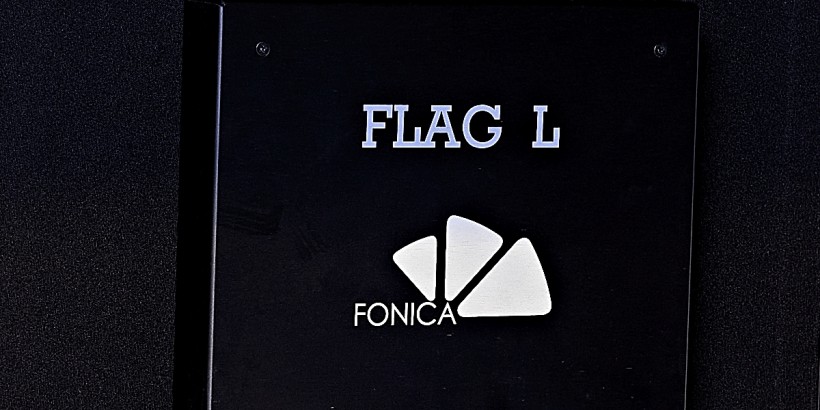I got familiar with Bakoon HPA-21 headphone amplifier in summer 2014 and it quickly turned out to be the very best sounding machine for notorious Sennheisers HD 800 I had at that time. Back then I acknowledged that Bakoon is no ordinary operation and I’ve been watching it very closely ever since. When Martin Gateley of soundkaos offered me to review his Libération dipoles along with Bakoon AMP-13R integrated deck, I happily obliged. Enjoy!
Introduction
It all started in the late ’80s. Back then Japanese engineer Akira Nagai witnessed how the market shifted from analogue playback to digital. As an enthusiast of the former, he found the new order dull in comparison. Since some music he enjoyed was available only on CDs, Mr Nagai’s mind was set on improving their domain. The man was already aware of how essential to sound quality timing and accuracy were. Extra mass in case of turntables was the usual way to go, whereas digital devices required jitter as low as possible to achieve similar result. He then built a machine of clock jitter as low as 100ps, but most importantly this experience gave him something to think about outside of the digital realm. As a true valve aficionado, Akira Nagai has gathered thousands of tubes over the years. At some point he started wondering whether hardware loaded with glass could be as accurate as his newly developed DAC and ‘nay’ was the conclusion. That’s why he decided to ditch valve machines and instead turn to far smaller and quicker semiconductors in his future projects, although with an unusual twist. Even in spite of all benefits the widely popular negative feedback introduced, due to inherently present timing delay it was off the table and distortions were the natural price to pay. In order to have an amplifier free from both, Nagai-san then came up with the idea of signal control in the current and not voltage domain. His invention changed amplification factor by input and output resistors only, was very linear, fast, had wide bandwidth and its impedance reversed; input value was close to 0Ω and output reached more than 100MΩ respectively. That’s how the first iteration of the now patented SATRI circuitry was born and Bakoon Products Co., Ltd. Japan was established shortly after.
As a true valve aficionado, Akira Nagai has gathered thousands of tubes over the years. At some point he started wondering whether hardware loaded with glass could be as accurate as his newly developed DAC and ‘nay’ was the conclusion. That’s why he decided to ditch valve machines and instead turn to far smaller and quicker semiconductors in his future projects, although with an unusual twist. Even in spite of all benefits the widely popular negative feedback introduced, due to inherently present timing delay it was off the table and distortions were the natural price to pay. In order to have an amplifier free from both, Nagai-san then came up with the idea of signal control in the current and not voltage domain. His invention changed amplification factor by input and output resistors only, was very linear, fast, had wide bandwidth and its impedance reversed; input value was close to 0Ω and output reached more than 100MΩ respectively. That’s how the first iteration of the now patented SATRI circuitry was born and Bakoon Products Co., Ltd. Japan was established shortly after. Interestingly, measuring instruments and industrial control systems were Nagai-san’s daily job for years. But once SATRI and Bakoon Products Co., Ltd. happened, he transitioned to full-time audio and highly likely never looked back. The story above was told in this utmost interesting interview, but there’s more. Japan is full of domestic audio houses known to local enthusiasts exclusively and Nagai-san’s operation flew under the worldwide radar for years. Constant improvement of the SATRI circuit has always been his top priority, whereas happy customers did all the marketing related heavy lifting in the good ‘ol word-of-mouth fashion. Busy with improving his circuit and keeping up with demand, the man wasn’t after recognition outside of Nippon. Well, to a point at least.
Interestingly, measuring instruments and industrial control systems were Nagai-san’s daily job for years. But once SATRI and Bakoon Products Co., Ltd. happened, he transitioned to full-time audio and highly likely never looked back. The story above was told in this utmost interesting interview, but there’s more. Japan is full of domestic audio houses known to local enthusiasts exclusively and Nagai-san’s operation flew under the worldwide radar for years. Constant improvement of the SATRI circuit has always been his top priority, whereas happy customers did all the marketing related heavy lifting in the good ‘ol word-of-mouth fashion. Busy with improving his circuit and keeping up with demand, the man wasn’t after recognition outside of Nippon. Well, to a point at least. In 2008 a young audio passionate/engineer – Soo In Chae – was working for a nano tech company and had plans for PhD in industrial engineering. Back then he was using Nagai-san’s AMP-5513 machine, whereas innovative technology inside this product and its sound quality fascinated the man. The two gents eventually met, Nagai-san wanted to go global, inspired and tech-savvy Soo In was on-board and that’s how Bakoon International was established in Seoul one year later. Goods based on clever SATRI circuit yet available worldwide and visually modern has always been the goal of this operation and Soo In’s full-time job since day one. All Bakoon’s designs are his work, though he’s also responsible for marketing and engineering as well. It’s safe to say that the two operations are different as far as their approach goes, but the technical core based on SATRI is the very same.
In 2008 a young audio passionate/engineer – Soo In Chae – was working for a nano tech company and had plans for PhD in industrial engineering. Back then he was using Nagai-san’s AMP-5513 machine, whereas innovative technology inside this product and its sound quality fascinated the man. The two gents eventually met, Nagai-san wanted to go global, inspired and tech-savvy Soo In was on-board and that’s how Bakoon International was established in Seoul one year later. Goods based on clever SATRI circuit yet available worldwide and visually modern has always been the goal of this operation and Soo In’s full-time job since day one. All Bakoon’s designs are his work, though he’s also responsible for marketing and engineering as well. It’s safe to say that the two operations are different as far as their approach goes, but the technical core based on SATRI is the very same. Recently the new Bakoon R&D center was established in Japan’s city of Kagoshima, Seoul’s HQ is scheduled to move to Silicon Valley somewhere in 2019 and manufacturing process will remain in South Korea. Also former Sony engineer – Keng Koe Ho – became Bakoon International’s CTO several years ago. The business seems to be booming, one DAC and three new amplifiers were introduced in just two years, whereas this review’s hero – AMP-13R – is the latest. And finally, the company’s name originated from words ‘Baku’ and ‘Un’, which combined stand for ‘a lucky dream’, whereas SATRI is derived from the Japanese ‘satori’ word, which translates to enlightenment. This rather bold descriptive measure one listener used past getting familiar with the first publicly showcased product by Nagai-san, who had to enjoy such feedback to a point where tweaking it a bit and officially labeling his tech as SATRI became a thing. Now let’s find out whether will I become enlightened after this adventure, shall we?
Recently the new Bakoon R&D center was established in Japan’s city of Kagoshima, Seoul’s HQ is scheduled to move to Silicon Valley somewhere in 2019 and manufacturing process will remain in South Korea. Also former Sony engineer – Keng Koe Ho – became Bakoon International’s CTO several years ago. The business seems to be booming, one DAC and three new amplifiers were introduced in just two years, whereas this review’s hero – AMP-13R – is the latest. And finally, the company’s name originated from words ‘Baku’ and ‘Un’, which combined stand for ‘a lucky dream’, whereas SATRI is derived from the Japanese ‘satori’ word, which translates to enlightenment. This rather bold descriptive measure one listener used past getting familiar with the first publicly showcased product by Nagai-san, who had to enjoy such feedback to a point where tweaking it a bit and officially labeling his tech as SATRI became a thing. Now let’s find out whether will I become enlightened after this adventure, shall we?
Build
All Bakoon goods are known for exceptional visuals, petite size, power measured not in hundreds but dozens of watts and the now discontinued Bakoon AMP-11R comes to mind. This is the one which established the company’s position on the global audio market, thus made Nagai-san’s achievement worldwide famous and it’s been quite the road for him and the rest of the team ever since. Several years passed since this amplifier’s premiere, but things at the Bakoon camp have been anything but stale. In 2017 reviews of its AMP-51R (100wpc, $19’500) and AMP-41R (50wpc, $9’000) integrated amps were published at 6moons.com. Clearly bigger and more powerful than anything before by the same company, these two aren’t exactly affordable and this review’s hero with $5’800 on its sticker is here to occupy the more pocket friendly space a fair bit below. One could now assume that this small deck is a victim of downscaling and brutal trimming. Well, is it really? Bakoon AMP-13R is here to address demand of enthusiasts after a product of lesser power and foot print than its more costly kin and as such is the result of downscaling, it exploits solutions meant for bigger products indeed. However, squeezing higher efficiency out of AMP-13R’s far smaller form led to a discovery, which proved to be so good that it will find its way into Bakoon’s upper echelon goods. Thermal shifts tracked via a precise sensor and bias adjusted accordingly within miliseconds is the result of the new management system. Current bias fixed accurately and constant regardless of load and temperature variations might sound trivial to pull off, whereas the on-site description says otherwise; ADC, DAC, MPU and suitable software were involved to make this leap. Fewer parts were used, signal routes got shorter and efficiency went up. Due to new power supply and output stage’s emitter resistors ditched, AMP-13R’s output impedance significantly went down and faster and more direct response is the outcome. This product’s instant readiness is yet another upshot and in order to emphasize the new circuit’s promptness, SATRI morphed into JET SATRI. All things considered it fits rather well, doesn’t it?
Bakoon AMP-13R is here to address demand of enthusiasts after a product of lesser power and foot print than its more costly kin and as such is the result of downscaling, it exploits solutions meant for bigger products indeed. However, squeezing higher efficiency out of AMP-13R’s far smaller form led to a discovery, which proved to be so good that it will find its way into Bakoon’s upper echelon goods. Thermal shifts tracked via a precise sensor and bias adjusted accordingly within miliseconds is the result of the new management system. Current bias fixed accurately and constant regardless of load and temperature variations might sound trivial to pull off, whereas the on-site description says otherwise; ADC, DAC, MPU and suitable software were involved to make this leap. Fewer parts were used, signal routes got shorter and efficiency went up. Due to new power supply and output stage’s emitter resistors ditched, AMP-13R’s output impedance significantly went down and faster and more direct response is the outcome. This product’s instant readiness is yet another upshot and in order to emphasize the new circuit’s promptness, SATRI morphed into JET SATRI. All things considered it fits rather well, doesn’t it? Bakoon AMP-13R measures (WxDxH) 230x230x55mm and weighs only four kilograms, which makes it the smallest stereo integrated yours truly had a pleasure of getting familiar with ever. The product’s nothing short but tiny and its ‘mere’ 25wpc into 8Ω indicate that it’s meant for people fully aware of how much power they really need. Its bandwidth starts at 10Hz and goes up to whopping 500kHz. Gain is 22.5dB for speakers/headphones (high) and 7dB for headphones (low) and a MPU-based attenuator of 50 steps in total controls it. Input impedance is 3.68Ω (SATRI-link) and 10kΩ (regular inputs). Top power consumption is 100 watts.
Bakoon AMP-13R measures (WxDxH) 230x230x55mm and weighs only four kilograms, which makes it the smallest stereo integrated yours truly had a pleasure of getting familiar with ever. The product’s nothing short but tiny and its ‘mere’ 25wpc into 8Ω indicate that it’s meant for people fully aware of how much power they really need. Its bandwidth starts at 10Hz and goes up to whopping 500kHz. Gain is 22.5dB for speakers/headphones (high) and 7dB for headphones (low) and a MPU-based attenuator of 50 steps in total controls it. Input impedance is 3.68Ω (SATRI-link) and 10kΩ (regular inputs). Top power consumption is 100 watts. The product’s enclosure is made out of one solid block of sandblasted aluminium and its top module’s factual height of 2.7cm I’ve found intriguing to say the least. This pancake stores all innards and sits on five multi-purpose pucks fixed to its underbelly. Three of these are several millimeters higher than the other two to form AMP-13R’s legs. All footers serve as radiators, whereas the largest one is also a compartment unit for toroidal transformer. Presumably that’s why it’s not loaded with fins just as the rest. Asymmetrical placement of these items might look random but is strategic for thermal exchange, stability, resonance control and greatly ups the visual ante if someone asks me. This very clever scheme allowed Soo In to escape with very short base module to have it as petite and minimalist as possible, whereas its merger with legs below I’ve found brilliant.
The product’s enclosure is made out of one solid block of sandblasted aluminium and its top module’s factual height of 2.7cm I’ve found intriguing to say the least. This pancake stores all innards and sits on five multi-purpose pucks fixed to its underbelly. Three of these are several millimeters higher than the other two to form AMP-13R’s legs. All footers serve as radiators, whereas the largest one is also a compartment unit for toroidal transformer. Presumably that’s why it’s not loaded with fins just as the rest. Asymmetrical placement of these items might look random but is strategic for thermal exchange, stability, resonance control and greatly ups the visual ante if someone asks me. This very clever scheme allowed Soo In to escape with very short base module to have it as petite and minimalist as possible, whereas its merger with legs below I’ve found brilliant. The product’s front sports the manufacturer’s logo on the left, input selection diodes (V1, V2 and SL) are next in line, then an IR receiver, endlessly rotating gain knob aka. volume control interface, volume indication LEDs and one 6.3mm headphone out on the far right. Interestingly this output exploits no separate circuit but the AMP-13R’s internal route, which translates to plenty of power to drive even the most notorious headphones out there. Once pressed, pleasantly smooth knob allows one to cycle through available inputs and its deep red Urushi finish looks gorgeous. This handmade coating and lacquering technique originates from Japan, is costly and serves as yet another tasteful twist for the already amazingly looking product.
The product’s front sports the manufacturer’s logo on the left, input selection diodes (V1, V2 and SL) are next in line, then an IR receiver, endlessly rotating gain knob aka. volume control interface, volume indication LEDs and one 6.3mm headphone out on the far right. Interestingly this output exploits no separate circuit but the AMP-13R’s internal route, which translates to plenty of power to drive even the most notorious headphones out there. Once pressed, pleasantly smooth knob allows one to cycle through available inputs and its deep red Urushi finish looks gorgeous. This handmade coating and lacquering technique originates from Japan, is costly and serves as yet another tasteful twist for the already amazingly looking product. The small red knurl on my loaner I’ve found as equally masterfully executed as earcups of full-sized Fostex TH900 headphones several years back. The product’s volume scheme consists of two rows with five LEDs in each. Lights up top go green in additive sequence once the one below hits the end of the road (9) and goes past it to reset. For example, volume level halfway through on the scale would result in three out of five top diodes lit up (values of 10, 20 and 30) and one below visible in the middle (5). Bakoon AMP-13R’s top cover sports nicely cut manufacturer’s logo. Fixed to the base via bolts hid on the machine’s underbelly it remains pleasantly clean. Its rear is crowded; one auto-sensing IEC inlet, quality terminals by Cardas, two voltage RCA inputs and one low Ω BNC representative are all located there. To benefit from the BNC-based SATRI connection, one would have to have i.e. Bakoon’s DAC-21 deck.
The small red knurl on my loaner I’ve found as equally masterfully executed as earcups of full-sized Fostex TH900 headphones several years back. The product’s volume scheme consists of two rows with five LEDs in each. Lights up top go green in additive sequence once the one below hits the end of the road (9) and goes past it to reset. For example, volume level halfway through on the scale would result in three out of five top diodes lit up (values of 10, 20 and 30) and one below visible in the middle (5). Bakoon AMP-13R’s top cover sports nicely cut manufacturer’s logo. Fixed to the base via bolts hid on the machine’s underbelly it remains pleasantly clean. Its rear is crowded; one auto-sensing IEC inlet, quality terminals by Cardas, two voltage RCA inputs and one low Ω BNC representative are all located there. To benefit from the BNC-based SATRI connection, one would have to have i.e. Bakoon’s DAC-21 deck. My loaner was internally as finely made as on the outside. The enclosure itself wasn’t a case of typically empty audio box made of several separate walls but artfully executed block of aluminium with a number of chambers precisely subtracted from it to separate key components inside. A toroidal transformer (by Avel Lindberg Inc.) stored in one of my loaner’s legs is a sight to behold and a log narrow gap milled just to marry its power inlet with internal PSU is yet another one. I haven’t yet seen any of these measures in AMP-13R’s price range. The latest Bakoon is of push-pull class AB and two pairs of Exicon lateral Mosfets fastened to its chassis directly do the heavy lifting, whereas the green board full of relays located a bit closer to the product’s rear is the volume control scheme. The two orange covers visible nearby hide SATRI-IC modules from prying eyes. These are fully discrete and took a lot of time and work, hence their hoods were left alone. In case of this report’s main product these arrived as detachable modules, but Bakoon’s costlier decks have ’em fixed to their main PCBs. All things considered, my loaner’s fit’n’finish is top tier both inside and out. Its internals are utmost orderly and it’s rather obvious how much thought went into this product. It’s a positively unusual cleverly put together top quality item and a fabulous looker if someone asks this reporter. And lastly, it arrived with a thin plastic RC. Black body with orange marks fits rather well and was clearly custom-made for Bakoon. It’ll do each of necessary tasks without hiccups and I’ve found it perfectly usable and handy.
My loaner was internally as finely made as on the outside. The enclosure itself wasn’t a case of typically empty audio box made of several separate walls but artfully executed block of aluminium with a number of chambers precisely subtracted from it to separate key components inside. A toroidal transformer (by Avel Lindberg Inc.) stored in one of my loaner’s legs is a sight to behold and a log narrow gap milled just to marry its power inlet with internal PSU is yet another one. I haven’t yet seen any of these measures in AMP-13R’s price range. The latest Bakoon is of push-pull class AB and two pairs of Exicon lateral Mosfets fastened to its chassis directly do the heavy lifting, whereas the green board full of relays located a bit closer to the product’s rear is the volume control scheme. The two orange covers visible nearby hide SATRI-IC modules from prying eyes. These are fully discrete and took a lot of time and work, hence their hoods were left alone. In case of this report’s main product these arrived as detachable modules, but Bakoon’s costlier decks have ’em fixed to their main PCBs. All things considered, my loaner’s fit’n’finish is top tier both inside and out. Its internals are utmost orderly and it’s rather obvious how much thought went into this product. It’s a positively unusual cleverly put together top quality item and a fabulous looker if someone asks this reporter. And lastly, it arrived with a thin plastic RC. Black body with orange marks fits rather well and was clearly custom-made for Bakoon. It’ll do each of necessary tasks without hiccups and I’ve found it perfectly usable and handy.
Sound
In order to review Bakoon AMP-13R, fidata HFAS-S10U handled storage and transport duties and then LampizatOr Pacific (KR Audio T-100 + KR Audio 5U4G Ltd. Ed.) took over. From there either Kinki Studio EX-M1 or this report’s hero passed the signal to soundkaos Libération or Boenicke W8. Once this was done, AMP-13R skirmished with my own NuForce STA200. Both were fronted by AMR DP-777SE and speakers of choice were Boenicke W5 in nearfield setup. At the time of publishing this material, I had no headphones nearby to witness how good the Bakoon is on this count, hence this investigation I’ll leave to Srajan. Before getting familiar with the story below, please take a look at the recently published review of soundkaos Libération first. This singular product arrived along with Bakoon AMP-13R not by accident or luck. My own investigation gave many reasons to think that neither was involved and simply confirmed what Martin Gateley knew so well for quite a while, the team he provided me with performed exceptionally well. To paint the clearer picture, out of four different amplifiers involved in my Libération writing, the one the Swiss kindly allowed me to use turned out to be not only the smallest, but the very best and by far, it rather easily bested the far costlier Trilogy 925 with these particular speakers. Past this experience it quickly became obvious that the petite newcomer by Bakoon is special indeed and as such it demands a separate tale. Now is the time to dig deeper into this matter.
Before getting familiar with the story below, please take a look at the recently published review of soundkaos Libération first. This singular product arrived along with Bakoon AMP-13R not by accident or luck. My own investigation gave many reasons to think that neither was involved and simply confirmed what Martin Gateley knew so well for quite a while, the team he provided me with performed exceptionally well. To paint the clearer picture, out of four different amplifiers involved in my Libération writing, the one the Swiss kindly allowed me to use turned out to be not only the smallest, but the very best and by far, it rather easily bested the far costlier Trilogy 925 with these particular speakers. Past this experience it quickly became obvious that the petite newcomer by Bakoon is special indeed and as such it demands a separate tale. Now is the time to dig deeper into this matter. The takeaway of Libération’s sound commentary was that Bakoon AMP-13R hit the sweet spot in comparison to other amplifiers used. It sounded more agile and openly than my Trilogy 925 and not as dry as the EX-M1, though the latter shared some similarities with Bakoon’s product. As far as openness, utmost quick attitude and soundstage size went, both integrated decks delivered in spades. I can’t quite tell how much to say in the matter had subconscious input of Exicons found inside of each product, thus I won’t exclude my own mind biased in this particular direction. In any case that’s pretty much it, common denominators of the two machines end here.
The takeaway of Libération’s sound commentary was that Bakoon AMP-13R hit the sweet spot in comparison to other amplifiers used. It sounded more agile and openly than my Trilogy 925 and not as dry as the EX-M1, though the latter shared some similarities with Bakoon’s product. As far as openness, utmost quick attitude and soundstage size went, both integrated decks delivered in spades. I can’t quite tell how much to say in the matter had subconscious input of Exicons found inside of each product, thus I won’t exclude my own mind biased in this particular direction. In any case that’s pretty much it, common denominators of the two machines end here. Martin’s speakers on duty showed all differences between both amplifiers as clearly as their similarities. With a product this sensitive the AMP-13R was utmost silent and orderly, this was heard in an instant. The so-called music background it had perfectly black and tonal center of gravity was a spot on. The EX-M1 in comparison sported more lit up, shinier, nervous and forward attitude. But what caught me off guard was AMP-13R’s readiness, it held no punches back once large orchestral schemes were on, its delivery on dynamic contrast and imaging grandeur counts was as remarkable as its rival’s. The effect was utmost snappy, vigorous, omnipresent and palpable yet not sloppy at all. Lightning fast response, tonal evenness and scale of at times gargantuan proportions are just few out of many reasons why Martin grew so fond of the team he left me with. I can only agree, the spectacle his speakers created with Bakoon’s latest deck was nothing short of mesmerizing.
Martin’s speakers on duty showed all differences between both amplifiers as clearly as their similarities. With a product this sensitive the AMP-13R was utmost silent and orderly, this was heard in an instant. The so-called music background it had perfectly black and tonal center of gravity was a spot on. The EX-M1 in comparison sported more lit up, shinier, nervous and forward attitude. But what caught me off guard was AMP-13R’s readiness, it held no punches back once large orchestral schemes were on, its delivery on dynamic contrast and imaging grandeur counts was as remarkable as its rival’s. The effect was utmost snappy, vigorous, omnipresent and palpable yet not sloppy at all. Lightning fast response, tonal evenness and scale of at times gargantuan proportions are just few out of many reasons why Martin grew so fond of the team he left me with. I can only agree, the spectacle his speakers created with Bakoon’s latest deck was nothing short of mesmerizing. Many ears could easily conclude that – in comparison to its opponent – the EX-M1 had the sheer fun factor elevated with Martin’s speakers. Its input resulted in sound beefier downstairs, even airier and in general more explosive and direct. The case was far from closed though, the juvenile element introduced by the Chinese machine morphed into mild fatigue in the long run, whereas nothing of the sort happened with the Bakoon. On the contrary, it remained pleasantly relaxed and substantial all time and the more yours truly compared the two products, the bigger the quality and balance gap between them became. The EX-M1 was drier, texturally more pale, less orderly and had bass boosted yet slightly hollow in the upper parts. This profile early on could’ve been viewed as more visceral, snappier and quite surgical take on music, to untrained ears simply put different if not subjectively better and that’s it. Wrong. Bakoon AMP-13R sounded calmer and more organic, it relied on very much alive and mature foundation sprinkled via outstanding detail retrieval rather than flashiness and directness.
Many ears could easily conclude that – in comparison to its opponent – the EX-M1 had the sheer fun factor elevated with Martin’s speakers. Its input resulted in sound beefier downstairs, even airier and in general more explosive and direct. The case was far from closed though, the juvenile element introduced by the Chinese machine morphed into mild fatigue in the long run, whereas nothing of the sort happened with the Bakoon. On the contrary, it remained pleasantly relaxed and substantial all time and the more yours truly compared the two products, the bigger the quality and balance gap between them became. The EX-M1 was drier, texturally more pale, less orderly and had bass boosted yet slightly hollow in the upper parts. This profile early on could’ve been viewed as more visceral, snappier and quite surgical take on music, to untrained ears simply put different if not subjectively better and that’s it. Wrong. Bakoon AMP-13R sounded calmer and more organic, it relied on very much alive and mature foundation sprinkled via outstanding detail retrieval rather than flashiness and directness. In comparison to the EX-M1, the petite deck was bold in a different way; more sophisticated, smooth and distinctively noble. It was a battle between quality and refinement versus quantity and brute force. Tangibility, substance and pleasantly moist connective tissue versus perfectly chiseled yet somewhat dry and separate artificial sculptures. Breathable, organic soundstage full of vivid instruments and voices against more direct and closer image with emphasis on its components’ outlines rather than filling. Tonal precision, substance and humidity against boosted downstairs department with everything above slimmer, more tense and immediate. Upstairs mass, subtlety and long decay versus shorter more lit up and raw approach. Bakoon AMP-13R introduced order, delicacy, pleasantly seasoned heft across the board and inviting blackness with not a hint of dilution, whereas Kinki Studio’s machine clearly favoured low end and put raw unrestrained power on the pedestal instead. With Martin’s OBs the small machine performed perfect balancing act, whereas the latter hardware was overcooked on one count and didn’t deliver some things its compact rival did.
In comparison to the EX-M1, the petite deck was bold in a different way; more sophisticated, smooth and distinctively noble. It was a battle between quality and refinement versus quantity and brute force. Tangibility, substance and pleasantly moist connective tissue versus perfectly chiseled yet somewhat dry and separate artificial sculptures. Breathable, organic soundstage full of vivid instruments and voices against more direct and closer image with emphasis on its components’ outlines rather than filling. Tonal precision, substance and humidity against boosted downstairs department with everything above slimmer, more tense and immediate. Upstairs mass, subtlety and long decay versus shorter more lit up and raw approach. Bakoon AMP-13R introduced order, delicacy, pleasantly seasoned heft across the board and inviting blackness with not a hint of dilution, whereas Kinki Studio’s machine clearly favoured low end and put raw unrestrained power on the pedestal instead. With Martin’s OBs the small machine performed perfect balancing act, whereas the latter hardware was overcooked on one count and didn’t deliver some things its compact rival did. Truth be told, with two liberated dipoles the EX-M1 sounded admirably well regardless of what I wrote above, to a point where many enthusiasts would say it’s a very good match and it in fact truly is. Kinki Studio’s deck is no pushover, far from it, please take a look here. But any product’s performance depends on a given context and company nearby. Put shortly, with dipoles by soundkaos the Chinese simply isn’t as good as this report’s main dish and that’s heard loud and clear. Bakoon’s dwarf pulled off the usual stunts as potently, it introduced qualities outside of the EX-M1’s reach with the same Swiss load and climbed the upper refinement tier in the process. It simply proved to be a superior fit, exceptionally high synergy is the right descriptive measure for the team Martin concocted, whereas three different amplifiers involved helped me to understand how finely matched it truly is.
Truth be told, with two liberated dipoles the EX-M1 sounded admirably well regardless of what I wrote above, to a point where many enthusiasts would say it’s a very good match and it in fact truly is. Kinki Studio’s deck is no pushover, far from it, please take a look here. But any product’s performance depends on a given context and company nearby. Put shortly, with dipoles by soundkaos the Chinese simply isn’t as good as this report’s main dish and that’s heard loud and clear. Bakoon’s dwarf pulled off the usual stunts as potently, it introduced qualities outside of the EX-M1’s reach with the same Swiss load and climbed the upper refinement tier in the process. It simply proved to be a superior fit, exceptionally high synergy is the right descriptive measure for the team Martin concocted, whereas three different amplifiers involved helped me to understand how finely matched it truly is. To hear and see how the AMP-13R delivers i.e. vocals in-between both speakers or unamplified acoustic guitars, namely to witness how tangible, vivid, moist, earthly, resonant and material all these can be is to understand where this little critter had a major edge over its rival. The Bakoon had no restraints as far as repertoire went, it handled it all like a champ with Libération, although recording quality factored in. This twosome sported enormous tear jerking potential and countless times yours truly caught himself simply drowning in music with the evaluation mode switched off and eyes tightly closed, which doesn’t happen every other day. After weeks of wrapping my head around the AMP-13R and Libération on duty as a team, namely tinkering with all hardware, playlist and placement combinations available, I’ve found it very easygoing, engaging, utmost pleasant to listen to and – apologies for florid wording – on many counts simply magical.
To hear and see how the AMP-13R delivers i.e. vocals in-between both speakers or unamplified acoustic guitars, namely to witness how tangible, vivid, moist, earthly, resonant and material all these can be is to understand where this little critter had a major edge over its rival. The Bakoon had no restraints as far as repertoire went, it handled it all like a champ with Libération, although recording quality factored in. This twosome sported enormous tear jerking potential and countless times yours truly caught himself simply drowning in music with the evaluation mode switched off and eyes tightly closed, which doesn’t happen every other day. After weeks of wrapping my head around the AMP-13R and Libération on duty as a team, namely tinkering with all hardware, playlist and placement combinations available, I’ve found it very easygoing, engaging, utmost pleasant to listen to and – apologies for florid wording – on many counts simply magical. For a reason high efficiency speakers such as the Swiss loaner aren’t the best match for a powerhouse the EX-M1 undoubtedly is. Going this route is in most cases nothing short but excessive, thus the comparison described above wasn’t fair. The Chinese is sound wise profiled somewhat similarly to the AMP-13R and a perfect reality check tool in my daily struggle, that’s why I used it. But in order to make it more even or at least try to, my daily driver – Boenicke W8 – was exploited next. In theory, such a load is far too difficult to handle for low-powered decks along the lines of the Bakoon. In practice, I have heard only one amp below 150wpc (50wpc Lavardin ISx) which proved to be a suitable companion for these Swiss boxes. In any case, with the W8 the 25wpc Bakoon AMP-13R clearly was in defense. But was it defenseless? Ah, that’s the best part.
For a reason high efficiency speakers such as the Swiss loaner aren’t the best match for a powerhouse the EX-M1 undoubtedly is. Going this route is in most cases nothing short but excessive, thus the comparison described above wasn’t fair. The Chinese is sound wise profiled somewhat similarly to the AMP-13R and a perfect reality check tool in my daily struggle, that’s why I used it. But in order to make it more even or at least try to, my daily driver – Boenicke W8 – was exploited next. In theory, such a load is far too difficult to handle for low-powered decks along the lines of the Bakoon. In practice, I have heard only one amp below 150wpc (50wpc Lavardin ISx) which proved to be a suitable companion for these Swiss boxes. In any case, with the W8 the 25wpc Bakoon AMP-13R clearly was in defense. But was it defenseless? Ah, that’s the best part. Bakoon’s latest stood its ground firmly against the EX-M1, which is a task to behold in the context of the former’s fairly low power. The latter on the other hand works outstandingly well with the W8. It goes really low, controls this load remarkably tightly, is very quick and in general sings in more civilized way with it than the other Swiss. That’s why it was far more difficult for the AMP-13R to put up a good fight. Nonetheless, it did far better than yours truly initially suspected. It ran out of juice only on tracks loaded with i.e. big Japanese drums aka instruments larger than life. The ideal scenario would be to hear their various tension and size and have them always snappy but not flat. The Bakoon differentiated these skillfully but also performed softening procedure on them, whereas the EX-M1 hit hard as hell and showcased their size, substance and everything else as good on top of that. The latter machine was simply feistier and stronger with no drawbacks, it held an edge over its rival in this regard as expected.
Bakoon’s latest stood its ground firmly against the EX-M1, which is a task to behold in the context of the former’s fairly low power. The latter on the other hand works outstandingly well with the W8. It goes really low, controls this load remarkably tightly, is very quick and in general sings in more civilized way with it than the other Swiss. That’s why it was far more difficult for the AMP-13R to put up a good fight. Nonetheless, it did far better than yours truly initially suspected. It ran out of juice only on tracks loaded with i.e. big Japanese drums aka instruments larger than life. The ideal scenario would be to hear their various tension and size and have them always snappy but not flat. The Bakoon differentiated these skillfully but also performed softening procedure on them, whereas the EX-M1 hit hard as hell and showcased their size, substance and everything else as good on top of that. The latter machine was simply feistier and stronger with no drawbacks, it held an edge over its rival in this regard as expected.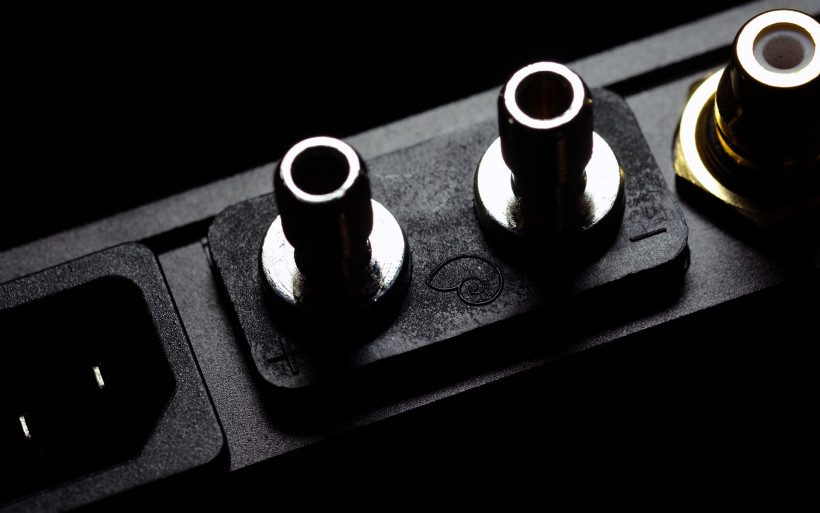 The two amps painted even the most enormous musical landscapes as equally easily and reliably, whereas the difference between them was in directness and presence yet again. The EX-M1 was more forward and here, the AMP-13R conducted the same business in a fair bit thicker and mellower fashion, it also provided perfectly clear view. This time around though the former’s direct approach wasn’t a sign of juvenile nerve. On the contrary, due to everything above bass properly orderly now, this worked in its favour. The Bakoon on the other hand brought its usual qualities to the table with the W8 as well and this changed a lot. Downstairs aside, it introduced the same earthly organic texturing and utmost dark background I grew so fond of in my confession above and did a tier better job with vocals and string instruments again. The same set of virtues revealed itself distinctively enough for me to admit for the second time that AMP-13R is no ordinary product but amazingly musical and lively machine in the first place. Even with my Swiss floorstanders the EX-M1 couldn’t climb this high on the refinement ladder, its rival’s strongest virtues were beyond the former’s reach once more.
The two amps painted even the most enormous musical landscapes as equally easily and reliably, whereas the difference between them was in directness and presence yet again. The EX-M1 was more forward and here, the AMP-13R conducted the same business in a fair bit thicker and mellower fashion, it also provided perfectly clear view. This time around though the former’s direct approach wasn’t a sign of juvenile nerve. On the contrary, due to everything above bass properly orderly now, this worked in its favour. The Bakoon on the other hand brought its usual qualities to the table with the W8 as well and this changed a lot. Downstairs aside, it introduced the same earthly organic texturing and utmost dark background I grew so fond of in my confession above and did a tier better job with vocals and string instruments again. The same set of virtues revealed itself distinctively enough for me to admit for the second time that AMP-13R is no ordinary product but amazingly musical and lively machine in the first place. Even with my Swiss floorstanders the EX-M1 couldn’t climb this high on the refinement ladder, its rival’s strongest virtues were beyond the former’s reach once more. All things considered, I’m fully aware that the EX-M1 is a better match for Boenicke W8 as things vital to grand music full of dynamic contrasts it simply does better than its opponent. Still, there’s something truly special about AMP-13R’s sound I can’t discard as an enthusiast. In front of the decision which amp to cherry-pick, the reasonable journo would go after the far more affordable EX-M1, whereas the aficionado within would be tremendously torn apart. Luckily I don’t have to face such choices and this comparison helped me to understand how good the product by Kinki Studio is with suitable companions. Now I think I appreciate and value this machine far more, whereas Bakoon AMP-13R did far better job with the W8 than expected. Interestingly with volume control fixed at 60% it provided enough SPL for me to be perfectly happy. The only two things it realistically missed were that extra oomph and drive in the low department its potent competitor sported, a bit more elasticity and grip essential for large music to flow freely and that’s it.
All things considered, I’m fully aware that the EX-M1 is a better match for Boenicke W8 as things vital to grand music full of dynamic contrasts it simply does better than its opponent. Still, there’s something truly special about AMP-13R’s sound I can’t discard as an enthusiast. In front of the decision which amp to cherry-pick, the reasonable journo would go after the far more affordable EX-M1, whereas the aficionado within would be tremendously torn apart. Luckily I don’t have to face such choices and this comparison helped me to understand how good the product by Kinki Studio is with suitable companions. Now I think I appreciate and value this machine far more, whereas Bakoon AMP-13R did far better job with the W8 than expected. Interestingly with volume control fixed at 60% it provided enough SPL for me to be perfectly happy. The only two things it realistically missed were that extra oomph and drive in the low department its potent competitor sported, a bit more elasticity and grip essential for large music to flow freely and that’s it. And lastly, the W5 case in nearfield environment. Although a bit slower, gutsier and mellower than Job225, NuForce STA200 is its relative and that’s audible. When the latter entered the market, it was priced at around $1’200, whereas I was fortunate to snatch one brand new and sealed for as little as $499. This was one of those purchases driven by impulse and full awareness of its innards and Swiss roots. I have no regrets. The STA200 is – dare I say – flawlessly engineered; always pleasantly cool, dead silent, instantly operational and sings very well with the W5, whereas on visual count it subjectively scores far higher than its more industrial Swiss-made kin. Now getting back to the Bakoon, positioned in the middle shelf of my home rack, it quickly became far hotter than it ever was at my cave. Soo In reassured me that the circuitry inside is spec’d to withstand far more, thus won’t toast itself or connected load. No smoke or dead speakers happened, everything was dandy just as the man foretold.
And lastly, the W5 case in nearfield environment. Although a bit slower, gutsier and mellower than Job225, NuForce STA200 is its relative and that’s audible. When the latter entered the market, it was priced at around $1’200, whereas I was fortunate to snatch one brand new and sealed for as little as $499. This was one of those purchases driven by impulse and full awareness of its innards and Swiss roots. I have no regrets. The STA200 is – dare I say – flawlessly engineered; always pleasantly cool, dead silent, instantly operational and sings very well with the W5, whereas on visual count it subjectively scores far higher than its more industrial Swiss-made kin. Now getting back to the Bakoon, positioned in the middle shelf of my home rack, it quickly became far hotter than it ever was at my cave. Soo In reassured me that the circuitry inside is spec’d to withstand far more, thus won’t toast itself or connected load. No smoke or dead speakers happened, everything was dandy just as the man foretold. The Bakoon conducted the usual business, pleasant saturation and momentum were on in an instant and the same story was with pleasant evenness and gravity. It was denser in comparison to the STA200 and more organic but not quicker or slower; the two machines were comparable on this count. And in spite of being more moisturized and heftier, the AMP-13R did substantially better on detail retrieval, decay, subtlety and tangibility counts. I could expand the list of this product’s virtues further yet again, but the takeaway is that my ears weren’t able to single out one aspect which the STA200 did better. Although perfectly in sync with the W5, it wasn’t as enjoyable, vivid and involving to listen to, whereas all differences between them one by one grew into a gap plainly big in the end. The case was closed for good.
The Bakoon conducted the usual business, pleasant saturation and momentum were on in an instant and the same story was with pleasant evenness and gravity. It was denser in comparison to the STA200 and more organic but not quicker or slower; the two machines were comparable on this count. And in spite of being more moisturized and heftier, the AMP-13R did substantially better on detail retrieval, decay, subtlety and tangibility counts. I could expand the list of this product’s virtues further yet again, but the takeaway is that my ears weren’t able to single out one aspect which the STA200 did better. Although perfectly in sync with the W5, it wasn’t as enjoyable, vivid and involving to listen to, whereas all differences between them one by one grew into a gap plainly big in the end. The case was closed for good.
Summary
Bakoon HPA-21 impressed me greatly years ago, though I wasn’t ready to fully embrace a machine this unique back then. Now a bit older, self-aware and somewhat deeper in the know, I was finally experienced enough to properly grasp what Bakoon AMP-13R truly is; an outstanding mature product through and through, made by individuals of artisanal skills and knowledge.
Even though its looks might say otherwise, not a single thing about Bakoon AMP-13R is casual. Its very appealing minimalist styling is the result of utmost clever engineering and top tier designer skills, whereas its build quality is second to none. This perfectionist luxurious item dressed like no other also scores ridiculously high where it matters most. It proves rather bluntly that top performance isn’t exclusive to big heavy boxes with hundreds of watts under their hoods. Organic, palpable, resolving, spacious and remarkably quick and silent, the most compact Bakoon effort to date pulls off fantastic balancing act, finely blends virtues very rarely heard together and fine-tuning a product to sing this pleasantly, fully blossomed and seasoned all across the board is an art to my ears. Since Bakoon AMP-13R throws punches far above what its foot print, power output and price might imply, its ask is fully justified in my book. If there’s a catch somewhere, I couldn’t find one. This is the product to go after if 25wpc is plenty for you.
This adventure reassured me once more that sometimes remarkable things come to us in very small inconspicuous packages and being fully ready for them is entirely up to us. To firm my own readiness I’ll simply say that the fabulously voiced, perfectly executed and styled Bakoon AMP-13 is the very best of its kind to my eyes and ears, simply put victorious. That’s why a suitable award follows, which also expresses my admiration for what the Bakoon team achieved thus far. Chapeau bas and ‘till next time!
Associated equipment:
- Amplifiers: Kinki Audio EX-M1, NuForce STA200
- Sources: LampizatOr Pacific (KR Audio T-100 + KR Audio 5U4G Ltd. Ed.), AMR DP-777SE
- Speakers: Boenicke Audio W8, Boenicke Audio W5, soundkaos Libération
- Transports: fidata HFAS-S10U
- Speaker cables: Forza AudioWorks Noir Concept, Audiomica Laboratory Celes Excellence, LessLoss C-MARC
- Interconnects: Audiomica Laboratory Erys Excellence
- Power components: Gigawatt PF-2 + Gigawatt LC-2 MK2 + Forza AudioWorks Noir Concept/Audiomica Laboratory Ness Excellence/LessLoss C-MARC
- Rack: Franc Audio Accesories Wood Block Rack
- Music: NativeDSD
Retail prices of reviewed components in EU (excl. VAT):
- Bakoon AMP-13R: €5‘800
Manufacturer: Bakoon International

















